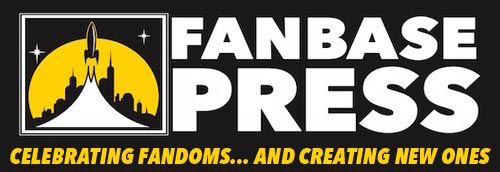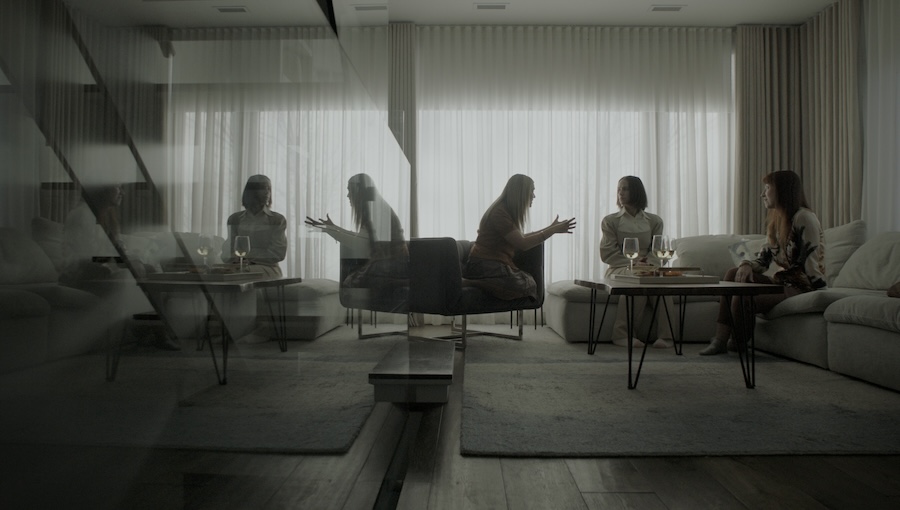The following is an interview with writer/director Liz Whitmere on the upcoming release of the film, Cold. In this interview, Fanbase Press Editor-in-Chief Barbra Dillon chats with Whitmere about the genesis behind the film’s story and themes, her shared experience in working with the cast and crew to bring the production to life on the screen, and more!
Barbra Dillon, Fanbase Press Editor-in-Chief: Congratulations on the upcoming release of Cold! For those who may be unfamiliar, how would you describe the story’s premise?
Liz Whitmere: COLD is about a woman who died sometime last week but didn’t notice. As her body decomposes, she starts to worry that something might actually be wrong… but it’s tough to get anyone to acknowledge there’s a problem. She resorts to DIY repairing herself as she tries to hold on to her normal life while literally falling apart.
BD: As the film’s writer and director, what can you share with us about the genesis behind the project and the story that you hoped to share?
LW: I wrote COLD after a terrible time in February 2023. I was physically freezing and also felt very depressed, and something was up with my circulation. I remember sitting on the edge of my bed thinking, “What if I’m dead?” then, “Wait, what if I’m dead? What would that look like?” and this story kind of unfurled itself in front of me. What would happen if a woman went to the doctor complaining of being deceased? Well, what happens when women in the real world go to the doctor with unexplainable symptoms? It takes 7-9 years to get a diagnosis for endometriosis. 80% of women and girls don’t get diagnosed with autism or ADHD until much later in life than boys do. Women’s health, and diseases of exclusion, have been disregarded for centuries.
How invested are we as a society in keeping women focused on the appearance of youth rather than addressing systemic problems? It’s certainly easier to talk about cosmetics than structural societal grievances, because you can buy makeup but the price of real change is quite high. As I explored this what-if world, I started talking to a few trusted colleagues about the idea. It resonated with several artists I deeply admire, and that provided momentum to move the project forward.
BD: Likewise, what can you tell us about your shared creative process in working with the cast and crew to bring the project to life on the screen?
LW: Associate Producer and long-time friend Anna Gustafson was one of the first people I reached out to with the idea, and her constant support and forward movement has been instrumental. Filmmaking is a team sport, and I’m very aware that I can’t do it all by myself – once you’ve spotted your people, hang on to them!
Melanie Scrofano (Wynonna Earp, Surreal Estate) plays our dead lead, and she brings a simmering rage to this role that is just perfect. Melanie joined the project when it was still just a paragraph in a Word document. She had the character so in hand that I didn’t have to do much of anything beyond sit back and watch magic happen on the monitor. Sean Baek (Killjoys, The Expanse) plays her partner Theo; Sean was a bit tentative when I first approached him since he has played a lot of intergalactic assassin types, and Theo is a softer character – but he zeroed in on the loving partner with the wrong toolkit beautifully. Peter Keleghan (Billable Hours, Murdoch Mysteries) is every doctor you’ve ever left an appointment with wanting to burn the world down. While shooting the doctor’s office scene, all of our female crew gathered around the monitor trading stories of being dismissed and belittled by medical professionals. His performance is almost too effective. The cast is rounded out by my long-time co-conspirator Stephanie Belding (Shadowhunters), as well as Rayisa Kondracki (Transplant, American Gods), and Cheslea Muirhead (Warrior).
I reached out to cinematographer Cabot McNenly (Little Dog, Cavendish) a bit trepidatiously. I’d been a fan since seeing Cabot’s work on Steven McCarthy’s O Negative, but we didn’t know each other well. I was over the moon when he said yes – I’m a hobbyist photographer, definitely not a cinematographer… but photography gave us a common visual language that made collaborating on this project smooth like butter. I love nothing more than working with people who are way better at what they do than I could ever be. I’m very grateful that Cabot was willing to trek out to my garage and various parks and garbage dumps around Toronto to get the final shots of the film.
When I called Caitlin Pupillo to ask if she’d be interested in Production/Costume design, my main pitch was that she’d get to make a person’s body look like it was made entirely of duct tape and garbage. Caitlin crafts clothing out of other clothing, and has a design sensibility that supported this surreal nightmare story beautifully. She jumped in with both feet and did the work of 10-20 people. Special effects makeup artist Natalia Andrea Pozo was instrumental in creating our increasingly-dead character, right down to the lichen growing on her skin.
Christopher Minns (Ginny & Georgia, Scared Shitless) jumped in to edit after reading the script, and I have to say his rough cut is the first rough cut I’ve ever watched and loved. I handed him a hard drive of footage and said, “Feel free to make it weird,” and oh boy did he ever. Loving the rough cut was such an unexpected experience that I had to lie down on the floor for a bit to recover.
I’d be remiss if I didn’t mention Daniela Pinto (Crimes of the Future), who did both the sound design and music composition for COLD… and who didn’t murder me when a festival played the wrong audio during a screening. I’d never found Tingsha bells to be haunting before this project, but now they’re permanently spooky. Rita Ushakova is a colour-correcting genius and very talented filmmaker in their own right, so I felt very chuffed that they dug this project. We spent ages making our lead greyer and greyer throughout the story, even as my notes read, “Even more dead, even more miserable.”
Making a movie of any length is a serious leap of faith, and this story felt like full free-fall for the entire process. I am incredibly lucky that so many extraordinary artists and collaborators chose to take the leap with me.
BD: At Fanbase, our #StoriesMatter initiative endeavors to highlight the impact that stories can have on audiences of various mediums. How do you feel that Cold’s story may connect with and impact today’s audiences?
LW: I’ve heard from audiences on our festival run that COLD taps into the same kind of hopeless rage that a lot of women “of a certain age” feel. One colleague described it as “The Substance before The Substance,” which is a compliment I’ll dine on for years and years. Anyone who has pursued an accurate diagnosis, who has felt out of step with their peers, or felt like there’s something wrong with them will hopefully feel represented in this story. This isn’t a story about women being good and men being bad… it’s about a very obvious problem that nobody has the tools to address, and so everyone is choosing not to admit it exists. I think our current political landscape provides plenty of fodder for this feeling that it’s all falling apart but we still have to wash the dishes.
BD: Are there any other projects – past or current – that you would like to highlight for our readers?
LW: I’m very excited to be developing COLD into a feature film – it’s turning out to feel a bit like Thelma & Louise meets Fight Club. I can’t wait to show you.
BD: Lastly, what is the best way for our readers to find more information about Cold and your other work?
LW: We’re hosting a free virtual screening on February 25, 2025 (Registration link) followed by a Q&A, and will be releasing the film shortly after that event. More information on this and other projects can be found on my website at www.lizwhitmere.com.

